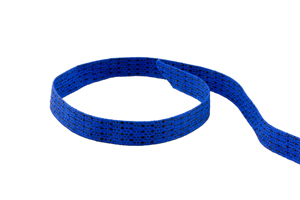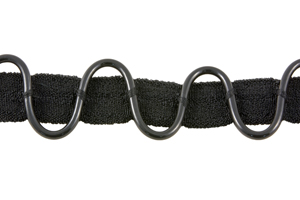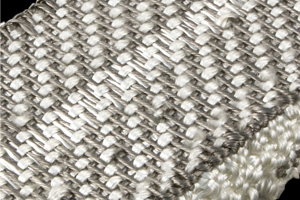E-WEBBINGS® e-Textiles from BRM
From smartphones, smart cars, and even smart clothes, today’s technology is quite literally woven into the fabric of our lives. From the fingertips of our touchscreen-compatible gloves to the electronic gauges that keep manufacturing centers safe, the Internet of Things (IoT) continues to evolve. As this industry rapidly advances, so too does the demand for smart textiles, or e-textiles.
Fabrics made with conductive fibers that allow electronics and digital parts to be embedded within them, e-textiles comprise the integrals market, which produces the components necessary for optimal data communication in our modern environment.
The Internet of Things
Today’s internet no longer limits the information superhighway to cables and computers; the Internet of Things connects a wide-reaching network of everyday devices designed to efficiently and easily exchange data. Vehicles, equipment, and even buildings are now crafted with embedded electronics, seamlessly integrating digital technology into the physical space.
As the Internet of Things becomes increasingly useful within our shifting landscape, smart textiles to support a network of wearable technology are taking center stage. Crafted from an assortment of fibers and other smart elements, e-textiles provide structural and conductive components to control and monitor electric currents, temperature, and the surrounding environment.
E-WEBBINGS® e-Textile Technology
Combining non-conductive base fibers with a blend of specialized, conductive elements, our E-WEBBINGS® e-textiles offer a customizable base for various smart textile projects. For example, a large fabric e-textile square produced by Bally Ribbon Mills can be placed into a custom application with small on-board battery and computer systems designed to sense environmental hazards, collect temperature and climate date, log distance and speed, and more.
To manufacture the E-WEBBINGS®, our team utilizes two main raw materials:
- Metal Stranding — Strands of carbon, nickel, titanium and other alloys are combined with nylon and other nonconductive fibers. The resulting commingled fiber is then woven into larger formats to be incorporated into finished products.
- Metal Injection — Fibers are combined with a metal-based powder, the resulting material is able to pick up and transfer electricity and sometimes even heat in the same style as metal strands.



Industries and Applications
Smart textiles are becoming increasingly common in medical and defense industries. Some particularly interesting use examples of E-WEBBINGS® include:
- Material Shielding — Depending on their environment, sensitive electronic parts often require extra protection. E-textiles can offer flexible and versatile material shielding and environment monitoring.
- Medical Monitoring — Modern smart textiles can be used to track a patient’s vital signs, including respiration, heart rate, and temperature. These medical textiles can also be used to monitor and collect data on a subject’s physical activity and well-being.
- Medical Research — With the rapid advance of e-textile technology, scientists and doctors are currently researching their potential for sensory restoration and therapy.
- Protective Garments — E-WEBBINGS® can be designed with special technology to alert a user of hazards such as gas, radiation, or dangerous chemicals. By incorporating this smart material into clothing, the wearer is protected from potential environmental threats.
Download E-WEBBINGS®: Narrow Woven Fabrics for the IoT Technology Sector
E-WEBBINGS® e-Textiles and Custom Products from Bally Ribbon Mills
An industry leader in textile production, Bally Ribbon Mills crafts E-WEBBINGS® and smart textiles to suit a wide range of applications, including material shielding devices and wearable technology.
With nearly 100 years of industry engagement, the Bally Ribbon team boasts deep hands-on experience in the design, development, and manufacture of specialized materials. Whether you require webbing, tape, or specialty fabric, we offer the products you need to succeed. To learn more about our smart textiles and custom materials, reach out to the team today.







